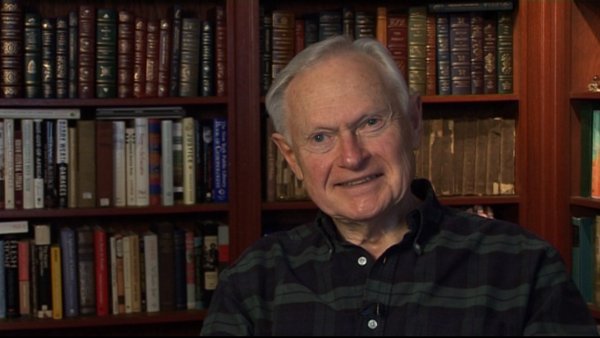NEXT STORY

'Hey boy, have you seen the eyes of that scrub nurse?'
RELATED STORIES

NEXT STORY

'Hey boy, have you seen the eyes of that scrub nurse?'
RELATED STORIES


|
Views | Duration | |
|---|---|---|---|
| 31. The first book - Doctors: The Biography of Medicine | 270 | 03:01 | |
| 32. My way to The New Yorker | 260 | 03:21 | |
| 33. An idea for a book worth writing | 270 | 03:55 | |
| 34. Working on How We Die | 290 | 02:42 | |
| 35. Who will publish How We Die? | 247 | 02:59 | |
| 36. The great success of How We Die | 283 | 05:19 | |
| 37. My method of writing | 286 | 04:04 | |
| 38. The concept of a changing brain | 261 | 02:38 | |
| 39. How our brains work | 297 | 03:33 | |
| 40. 'Hey boy, have you seen the eyes of that scrub nurse?' | 260 | 02:05 |


Very recently, I was thinking about writing a book on mental disease and how people recover from it, and I felt I had to learn a lot of neuroscience, so I thought I'd go back to Freud again. And I was reading one of his early essays, A Project for a Scientific Psychology. He wrote this before he really got into most of the psychoanalytic stuff.
You know, he was a neuroscientist before he went into psychiatry, or psychology, as he always called it, and he was one of the major contributors to the neuron theory, the theory of the cell and its dendrites and axons, it's the pathways that lead from it, the fibres that lead from it.
And he, in this essay, is essentially predicting neuroplasticity. I read it this summer. I was stunned by it. He was not only predicting neuroplasticity, but he was predicting the existence of the synapse, the place where the nerve fibres come together, decades before Sherrington won a Nobel prize for that discovery.
He sort of intuited it, because he knew how the unconscious mind worked, and he figured these things had to exist. It was the way capillaries were predicted before they were discovered. The only way you could explain how blood went from the arteries into the veins was by some tiny microscopic system of vessels. So, somebody said, you know, whether they're pores, whether they're vessels, something's got to connect them, and then later a guy called Malphigi came along and really saw them under the microscope. This is the way it is with Freud. He just reasoned that nerve impulses had to jump across a gap, the synapse. He reasoned that the more these microscopic pathways are used, they stronger they get, and the less they're used, the weaker they get. But they never fade out, and that's why we have memory. They can always be brought back if something happens that brings the memory back. And those pathways strengthen again. The plasticity of the brain, the changeability of the brain. And now we know even more. Now we know that there are adult stem cells in the brain, and with the appropriate kind of stimulation, they're converted into nerve cells and neurons. Whoever dreamed of such a thing? But now we know it. And as you read theories of the unconscious mind, you recognize that the only way to explain some of the things the unconscious mind does is with the concept of a changing brain. Whether it changes for the worse, and you get emotionally sick, or as you recover, it changes for the better, it changes, organically, just as it does physiologically.
Sherwin Nuland (1930-2014) was an American surgeon and author who taught bioethics, the history of medicine, and medicine at the Yale University School of Medicine. He wrote the book How We Die which made The New York Times bestseller list and won the National Book Award. He also wrote about his own painful coming of age as a son of immigrants in Lost in America: A Journey with My Father. He used to write for The New Yorker, The New York Times, Time, and the New York Review of Books.
Title: How our brains work
Listeners: Christopher Sykes
Christopher Sykes is a London-based television producer and director who has made a number of documentary films for BBC TV, Channel 4 and PBS.
Tags: Sigmund Freud, Charles Sherrington, Marcello Malpighi
Duration: 3 minutes, 33 seconds
Date story recorded: January 2011
Date story went live: 04 November 2011